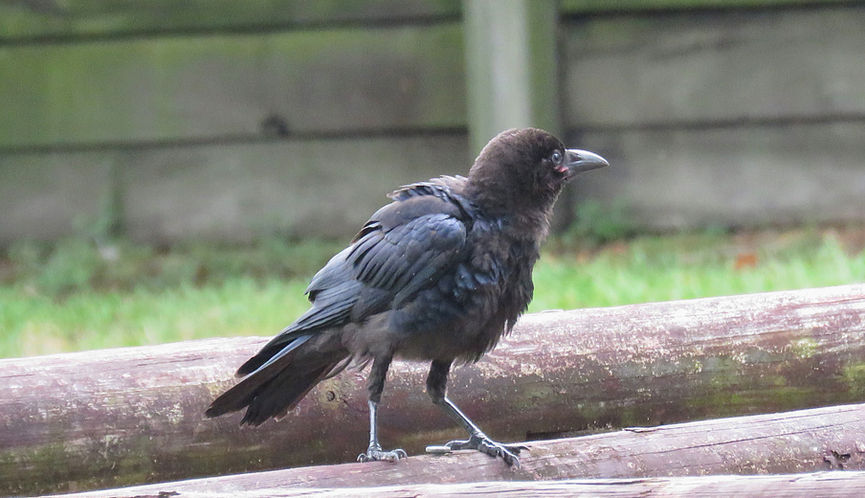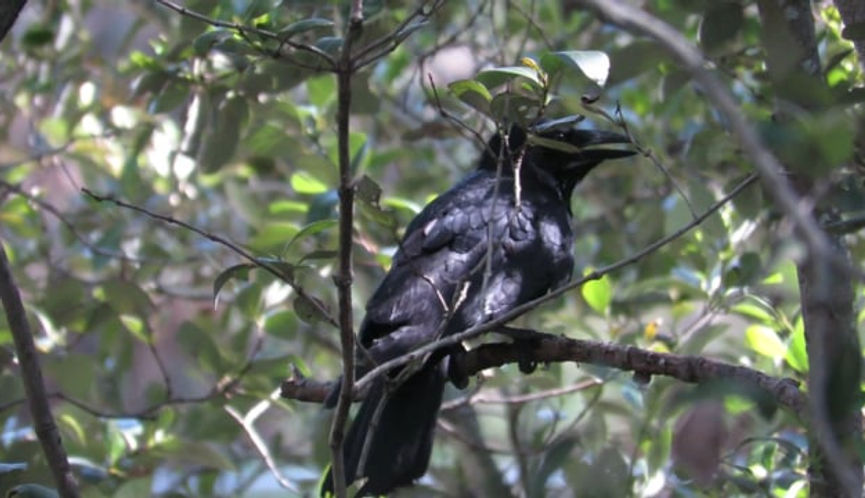Torresian Crow
Corvis orru
Quick facts
Other names: Australian Crow.
Size: Large, similar to chicken.
Range and lifestyle: Resident across northern Australia.
Food: Seeds, insects, small birds and eggs, but also road-killed and other dead animals.
Breeding: Mostly in September and October. Nest is a rough bowl of sticks, sparsely lined with grass. Clutch is 3-5 eggs, greenish-white, with brown spots or blotches. Mum incubates the eggs for nearly 3 weeks, but both parents feed the young, which take 6 weeks to leave the nest.
Instantly recognisable by their large size and all-black plumage, crows have adapted to human cities all around the world. This is mainly due to their ability to find and feed on the food and food scraps that people throw out in enormous quantities each day. They are also able to feed on the many animals killed by people’s cars. This varied diet means that crows don’t have to spend as much time foraging as many other birds. But crows also help humans by killing pests, such as rats, mice and cockroaches.
Around the world, crows are known for their intelligence and problem-solving ability. They have excellent long-term memory, and are able to make and use tools, such as hooks and spikes, to get access to food items in places that are difficult to reach. In some parts of the world, crows have learnt to drop nuts and shellfish onto hard surfaces to crack them open. And sometimes crows work in teams to steal food from larger birds.
The crow family is represented in Australia by five similar-looking species, and each occurs in at least one capital city. In Brisbane it is the Torresian Crow, while in Sydney it is the slightly larger Australian Raven. Though difficult to see, the bases of the shiny black feathers of Torresian Crows are white, whereas those of the Australian Raven are brown. However their calls are easier to distinguish, as Torresian Crows mainly give a monotonous “ok-ok-ok” notes, while Ravens give a slower, drawn-out call, with the last elongated note dropping in pitch.In addition, Torresian Crows often shuffle their wings after landing on a perch. The age of crows can be gauged by their eye colour, which is brilliant white in adults, brown in immature birds, and pale blue in juveniles.
Between January and August, Torresian Crows of all ages travel in large flocks across farmlands, forests and cities. From September to December, many leave these flocks to breed in temporary territories. Crow couples return to the same territory every year, though territories are sometimes taken over by other couples. Torresian Crows nest in tall trees in nature, but in cities and towns they often build their nests on human structures, such as power pylons, telephone poles, and towers - another reason for their success in urban areas.
Text © Richard Noske 2019 CC BY-NC-SA





















